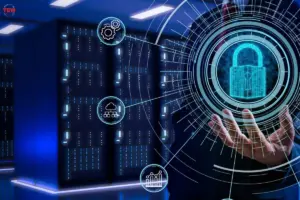Law Maker Institutes of USA
- Introduction to Law Maker Institutes
- Understanding the Role of Law Maker Institutes
- Overview of Law Maker Institutes in the USA
- Historical Background
- Types of Law Maker Institutes
- The United States Congress
- Structure and Function
- Powers and Responsibilities
- The Executive Branch
- Presidency and Executive Agencies
- Roles in Law Making
- The Judicial Branch
- Supreme Court and Federal Courts
- Interpretation of Laws

- State Legislatures
- Role and Composition
- Comparison with Federal Congress
- Local Government Bodies
- County and City Councils
- Importance in Law Making
- Influence of Special Interest Groups
- Lobbying and Advocacy
- Impact on Legislation
- Challenges Faced by Law Maker Institutes
- Addressing Contemporary Issues
- Partisanship and Gridlock
- Public Perception and Trust
- Future Trends and Developments
- Technological Advancements
- Changing Demographics
- Legislative Reforms
- Conclusion
- FAQs
- What is the primary role of law maker institutes?
- How do special interest groups influence legislation?
- What are some challenges faced by law maker institutes in the USA?
- How do state legislatures differ from the United States Congress?
- What role do local government bodies play in law making?
Law Maker Institutes of USA
Law Maker Institutes form the cornerstone of governance in the United States, playing a crucial role in shaping legislation and policies that affect the lives of millions. From the federal level to local governments, these institutions operate in a complex web of checks and balances, ensuring a fair and just legal system. Let’s delve into the intricacies of these institutes and their significance in the American political landscape.
Understanding the Role of Law Maker Institutes
Law Maker Institutes encompass various branches of government responsible for creating, interpreting, and enforcing laws. They include the legislative, executive, and judicial branches at both federal and state levels. Each branch serves distinct functions, but they collectively work towards maintaining order, protecting rights, and promoting the welfare of society.
Overview of Law Maker Institutes in the USA
Historical Background
The foundation of law maker institutes in the USA traces back to the founding principles laid out in the Constitution. Inspired by democratic ideals, the framers established a system of government with separate but interdependent branches to prevent abuse of power.
Types of Law Maker Institutes
In the United States, the primary law maker institutes are the Congress, the Executive Branch, and the Judicial Branch at the federal level. Additionally, each state has its own legislature, executive, and judiciary, while local governments operate at the county and municipal levels.
The United States Congress
Structure and Function
The Congress, consisting of the Senate and the House of Representatives, holds the legislative authority at the federal level. It is responsible for drafting, debating, and passing bills into law, as well as overseeing the budget and foreign policy.
Powers and Responsibilities
As the primary law-making body, Congress has the power to enact legislation on a wide range of issues, including taxation, national defense, and healthcare. It also has the authority to declare war, confirm presidential appointments, and impeach federal officials.
The Executive Branch
Presidency and Executive Agencies
Led by the President, the Executive Branch executes and enforces laws passed by Congress. It comprises federal agencies and departments responsible for various functions, such as national security, environmental protection, and economic regulation.
Roles in Law Making
While the President cannot directly create laws, they play a crucial role in the legislative process by proposing agendas, vetoing bills, and issuing executive orders to implement policies.
The Judicial Branch
Supreme Court and Federal Courts
The Judicial Branch, headed by the Supreme Court, interprets the Constitution and resolves disputes arising from federal laws. It ensures the legality and constitutionality of legislation through judicial review.
Interpretation of Laws
Federal courts, including the Supreme Court, interpret laws and precedents to ensure their application aligns with constitutional principles. They have the authority to strike down laws that violate individual rights or exceed congressional authority.
State Legislatures
State legislatures mirror the structure and function of Congress at the state level. They are responsible for enacting laws specific to their jurisdiction and overseeing state budgets and policies.
Role and Composition
State legislatures typically consist of a bicameral or unicameral system, with members elected by the residents of each state. They address issues ranging from education and healthcare to transportation and criminal justice.
Comparison with Federal Congress
While state legislatures share similar functions with Congress, they focus on issues that directly impact their respective states, such as local governance, taxation, and public services.
Local Government Bodies
Local government bodies, including county and city councils, play a vital role in law making at the grassroots level. They address local concerns, such as zoning regulations, public safety, and infrastructure development.
Importance in Law Making
County and city councils draft ordinances and resolutions to address the needs of their communities. They work closely with state and federal authorities to ensure effective governance and service delivery.
Influence of Special Interest Groups
Special interest groups, including lobbyists and advocacy organizations, wield significant influence over law maker institutes through campaign contributions, lobbying efforts, and grassroots mobilization.
Lobbying and Advocacy
Special interest groups lobby lawmakers to promote or oppose legislation that aligns with their interests. They engage in advocacy campaigns to raise awareness and mobilize public support for their causes.
Impact on Legislation
The influence of special interest groups can shape the legislative agenda, priorities, and outcomes. While some advocate for social justice and environmental protection, others represent corporate interests or specific industries.
Challenges Faced by Law Maker Institutes
Addressing Contemporary Issues
Law maker institutes must adapt to evolving societal challenges, such as climate change, healthcare reform, and technological advancements, while upholding democratic values and principles.
Partisanship and Gridlock
Political polarization and partisan conflicts often hinder legislative progress and compromise, leading to gridlock and legislative stalemates on critical issues.
Public Perception and Trust
Perceptions of corruption, inefficiency, and lack of transparency erode public trust in law maker institutes, undermining their legitimacy and effectiveness in governance.
Future Trends and Developments
Technological Advancements
Advances in technology, such as artificial intelligence and big data analytics, are transforming how law maker institutes operate, from digital governance to online participation





